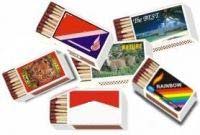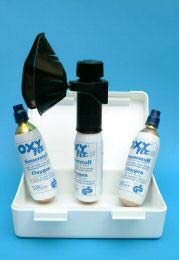
Dangerous goods carried by passengers or crew
Dangerous Goods Carried By Passengers or Crew
Dangerous goods are those articles or substances that which are capable of posing a significant risk to health, safety or property when transported by air. Many common items used everyday in the home or workplace may seem harmless, but, when transported by air, can be very dangerous. In flight, variations in temperature and pressure can cause items to leak, generate toxic fumes or start a fire.
In general, dangerous goods are prohibited in baggage. There are, however, certain exceptions for personal care, medical needs, sporting equipment, and items to support physically disabled passengers.
The following are those articles that may be carried by passengers on aircraft. The information is also in the table at the end of the list.
Goods acceptable with the approval of the operator(s).
The following goods may be carried on aircraft only with the approval of the operator(s). If you intend to carry one or more of the following items, please contact your airline(s) prior to your intended travel day. Airlines reserve the right not to accept any particular article for carriage.
• Small
gaseous oxygen or air cylinders required for medical use;
• As checked baggage only, securely packaged
small arms ammunition in Division
1.4S, in quantities not exceeding 5 kg gross weight per person for that person's own use, excluding ammunition with explosive or incendiary projectiles. Each persons allowance must be separately packed;
• As checked baggage,
carbon dioxide, solid (dry ice) in quantities not exceeding 2
kg per person when used to pack perishables that are not classified as dangerous goods, provided the checked baggage (package) permits the release of carbon dioxide gas;
•
Wheelchairs or other battery powered mobility aids with non spillable batteries
as checked baggage only, provided the battery terminals are protected from short circuits and the battery is securely attached to the wheelchair or mobility aid;
Note: Wheelchairs/mobility aids with gel type batteries do not require the battery to be disconnected provided the battery terminals are insulated to prevent accidental short circuits.
•
Wheelchairs or other battery powered mobility aids with spillable batteries as
checked baggage only, provided that the wheelchair or mobility aid can be loaded, stowed, secured and unloaded always in an upright position and that the battery is disconnected, the battery terminals are protected from short circuits and the battery is securely attached to the wheelchair or mobility aid. If the wheelchair or mobility aid cannot be loaded stowed, secured and unloaded always in an upright position, the battery must be removed and the wheelchair or mobility aid may then be carried as checked baggage without restriction. The removed battery must be carried in strong, rigid packagings as follows:
Civil Aviation Authority of New Zealand
Page 1 of 8
• packagings must be leak-tight and impervious to the battery fluid;
• batteries must be protected against short circuits, secured upright in these
packagings and surrounded by compatible absorbent material sufficient to absorb their total liquid contents; and
• these packaging must be marked "BATTERY, WET WITH
WHEELCHAIR" or "BATTERY WET WITH MOBILITY AID" and be labelled with the "Corrosive" label and with the "Package Orientation" label.
It is recommended that passengers make advance arrangements with each operator; also unless batteries are non-spillable they should be fitted, where feasible, with spill-resistance vent caps;
• No more than two small cylinders of
carbon dioxide or another suitable gas in
Division 2.2 per person fitted into a
self inflating life jacket for inflation purposes,
plus no more than two spare cartridges;
•
Heat producing articles, (i.e. battery operated equipment such as underwater
torches and soldering equipment which, if accidentally activated, will generate extreme heat and can cause fire) may be carried in carry-on baggage only. The heat producing component, or the energy source, must be removed so as to prevent unintentional functioning during transport.
• One
avalanche rescue back pack per person equipped with a pyrotechnic trigger
mechanism containing not more than 200 mg net of Division 1.4S and not more than 250 mg of compressed gas of Division 2.2. The backpack must be packed in such a manner that it cannot be accidentally activated. The airbags within the backpack must be fitted with pressure release valves.
• As checked baggage only,
camping stoves and fuel containers for camping stoves
that have contained a flammable liquid fuel may be carried provided the fuel tank of the camping stove and/or fuel container has been completely drained of all liquid fuel and action has been taken to nullify the danger.
Note: Many airlines have adopted a standard procedure to ensure that the danger has been nullified. It is recommended that you contact the airline prior to the date of departure to ensure that you follow this procedure.
• Insulated packaging containing
refrigerated liquid nitrogen (dry shipper) fully
absorbed in a porous material and intended for transport, at low temperature, of non-dangerous products provided the insulated packaging would not allow the build up of pressure within the container and would not permit the release of any refrigerated liquid nitrogen irrespective of the orientation of the insulated packaging.
Civil Aviation Authority of New Zealand
Page 2 of 8
Goods acceptable without the approval of the operator(s).
The following goods may be carried on aircraft as baggage without the approval of the operator(s).
• When in retail packagings,
alcoholic beverages containing not more than 70 per
cent alcohol by volume, when packed in receptacles not exceeding 5 L; with a total net quantity per person of 5 L for such beverages;
Note: Alcoholic beverages containing less than 24 per cent alcohol by volume are not subject to any restrictions.
•
Non-radioactive medicinal or toilet articles (including aerosols). Also aerosols in
Division 2.2, with no subsidiary risk, for sporting or home use in checked baggage
only. The total net quantity of all such articles carried by each passenger must not
exceed 2 kg or 2 L and the net quantity of each single article must not exceed 0.5
kg or 0.5 L. Release valves on aerosols must be protected by a cap or other suitable
means to prevent inadvertent release of the contents. The term "medicinal or toilet
article (including aerosols)" is intended to include such items as
hair sprays,
perfumes, colognes and medicines containing alcohols;
• Small cylinders of a gas of Division 2.2 worn for the operation of
mechanical
limbs. Also spare cylinders of similar size if required to ensure an adequate supply
for the duration of the journey.
• As carry-on baggage,
carbon dioxide, solid (dry ice) in quantities not exceeding 2
kg per person when used to pack perishables that are not classified as dangerous goods, provided the package permits the release of carbon dioxide gas;
•
Safety matches or a lighter intended for use by an individual when carried on the
person. However, lighters containing unabsorbed liquid fuel (other than liquefied gas), lighter fuel and lighter refills are not permitted on one's person or in checked or carry-on baggage;
Note: "Strike anywhere' matches are forbidden for air transport.
•
Radioisotope cardiac pacemakers or other devices, including those powered by
lithium batteries, implanted into a person, or radio-pharmaceuticals contained within the body of a person as the result of medical treatment;
•
Hair curlers containing hydrocarbon gas, no more than one per passenger,
provided that the safety cover is securely fitted over the heating elements. These hair curlers must not be used on board the aircraft at any time and gas refills for such curlers must not be carried;
• One small
medical or clinical thermometer which contains mercury, for personal
use, when in its protective case.
•
Lithium or lithium ion cells or batteries contained in
consumer electronic
devices (watches, calculating machines, cameras, cellular phones, lap-top
computers, camcorders etc) when carried by passengers for personal use. Spare
batteries must be individually protected so as to prevent short circuits and carried
Civil Aviation Authority of New Zealand
Page 3 of 8
in carry-on baggage only. In addition, spare lithium batteries must not exceed the following quantities:
• for lithium metal or lithium alloy batteries, a lithium content of not more than 2
• for lithium ion batteries, an aggregate equivalent lithium content of not more
• Lithium ion batteries with an aggregate equivalent lithium content of more than 8
grams but not more than 25 grams may be carried in carry-on baggage if they are individually protected so as to prevent short circuits and are limited to two spare batteries per person.
Note: "lithium content" means the mass of lithium in the anode of a lithium metal or lithium alloy cell, except in the case of a lithium ion cell the "lithium-equivalent content" in grams is calculated to be 0.3 times the rated capacity in ampere-hours.
Civil Aviation Authority of New Zealand
Page 4 of 8





Dangerous goods must not be carried in or as passengers checked or carry-on baggage, except as otherwise provided below.
Security type attaché cases incorporating dangerous goods, such as lithium batteries or pyrotechnic devices, are totally forbidden.
Disabling devices such as mace, pepper sprays etc. containing an irritant or incapacitating substance are prohibited on the person, in checked or carry-on baggage.
Permitted in or as carry-on baggage
Permitted in or as checked baggage
Permitted on one's person
The approval of the operator(s) is required
YES NO Alcoholic beverages when in retail packages containing not more than 70% alcohol by volume, in
receptacles not exceeding 5 L, with a total net quantity per person of 5 L.
NO YES NO NO Non-flammable non-toxic aerosols for sporting or home use,
YES NO Non-radioactive medicinal or toilet articles (including aerosols) such items as hair sprays,
perfumes, colognes and medicines containing alcohols.
The total net quantity of all such articles carried by each passenger must not exceed 2 kg or 2 L and the net quantity of each single article must not exceed 0.5 kg or 0.5 L. Release valves on aerosols must be protected by a cap or other suitable means to prevent inadvertent release of the contents.
YES YES NO NO Hair curlers containing hydrocarbon gas, only one per passenger, provided that the safety cover is
securely fitted over the heating element. These hair curlers must not be used on board the aircraft at any
time. Gas refills for such curlers are not permitted as checked or carry-on baggage.
YES YES NO YES Carbon dioxide, solid (dry ice) in quantities not exceeding 2 kg per passenger when used to pack
perishables that are not classified as dangerous goods in carry-on baggage, provided the package permits the release of carbon dioxide gas. The approval of the operator is required for checked baggage only.
Civil Aviation Authority of New Zealand
Page 5 of 8



Permitted in or as carry-on baggage
Permitted in or as checked baggage
Permitted on one's person
The approval of the operator(s) is required
Safety matches or a lighter intended for use by an individual when carried on one's person. However,
containing unabsorbed liquid fuel (other than liquid gas), lighter fuel and lighter refills are not
permitted on one's person or in checked or carry-on baggage
YES NO Small non-flammable non-toxic gas cylinders worn for the operation of mechanical limbs. Also spare
cylinders of similar size if required to ensure an adequate supply for the duration of the journey
Radioisotope cardiac pacemakers or other devices, including those powered by lithium batteries,
implanted into a person, or radio-pharmaceuticals contained within the body of a person, as the result
of medical treatment
YES YES NO YES Small gaseous oxygen or air cylinders required for medical use
NO YES NO YES Securely packaged cartridges (UN 0012 or UN 0014) in Division 1.4S, in quantities not exceeding 5
kg gross weight per person for that person's own use, excluding ammunition with explosive or incendiary projectiles. Allowances for more than one person must not be combined into one or more packages
Wheelchairs or other battery powered mobility devices with non-spillable batteries, provided the
battery terminals are protected from short circuits and the battery is securely attached to the wheelchair
or mobility device
Note: Wheelchairs/mobility aids with gel type batteries do not require the battery to be disconnected
provided the battery terminals are insulated to prevent accidental short circuits.
Wheelchairs or other battery powered mobility aids with spillable batteries provided the item can be
handled always in an upright position, the battery is disconnected and the battery terminals are
protected from short circuits, and the battery is securely attached to the wheelchair or mobility device.
Civil Aviation Authority of New Zealand
Page 6 of 8
Permitted in or as carry-on baggage
Permitted in or as checked baggage
Permitted on one's person
The approval of the operator(s) is required
A mercurial barometer or thermometer carried by a representative of a government weather bureau
or similar agency.
Two small cylinders of non-flammable, non-toxic gas fitted into a self inflating life jacket for
inflation purposes, plus no more than two spare cartridges.
Heat producing articles such as underwater torches (diving lamps) and soldering irons.
YES NO Small medical or clinical thermometer which contains mercury, for personal use, when in its
protective case.
YES YES NO YES Avalanche rescue back pack, one per person, equipped with a pyrotechnic trigger mechanism
containing not more than 200 mg net of Division 1.4S and not more than 250 mg of compressed gas of Division 2.2. The backpack must be packed in such a manner that it cannot be accidentally activated. The airbags within the backpack must be fitted with pressure release valves.
YES NO Lithium or lithium ion cells or batteries contained in consumer electronic devices (watches,
calculating machines, cameras, cellular phones, lap-top computers, camcorders etc) when carried by passengers or crew for personal use. Spare batteries must be carried in carry-on baggage only. In addition, each spare lithium battery must not exceed the following quantities:
for lithium metal or lithium alloy batteries, a lithium content of not more than 2 grams; or
for lithium ion batteries, an aggregate equivalent lithium content of not more than 8 grams.
Lithium ion batteries with an aggregate equivalent lithium content of more than 8 grams but not more than 25 grams may be carried in carry-on baggage if they are individually protected so as to prevent short circuits and are limited to two spare batteries per person
Civil Aviation Authority of New Zealand
Page 7 of 8
Permitted in or as carry-on baggage
Permitted in or as checked baggage
Permitted on one's person
The approval of the operator(s) is required
NO YES NO YES Camping stoves and fuel containers for camping stoves that have contained a flammable liquid fuel
may be carried provided the fuel tank of the camping stove and/or fuel container has been completely drained of all liquid fuel and action has been taken to nullify the danger.
Note: Many airlines have adopted a standard procedure to ensure that the danger has been nullified. It is recommended that you contact the airline prior to the date of departure to ensure that you follow this procedure.
YES YES NO YES Insulated packaging containing refrigerated liquid nitrogen (dry shipper) fully absorbed in a porous
material and intended for transport, at low temperature, of non-dangerous products provided the insulated packaging would not allow the build up of pressure within the container and would not permit the release of any refrigerated liquid nitrogen irrespective of the orientation of the insulated packaging
Civil Aviation Authority of New Zealand
Page 8 of 8
Source: http://www.nzdgatc.co.nz/passenger.pdf
34th ECDD 2006/4.4 khat Assessment of khat (Catha edulis Forsk) Substance Identification A. International Nonproprietary Name (INN): - B. Chemical Abstract Service (CAS) Registry Number: - C. Other Names: qat, q'at, kat, kath, gat, chat, tschat (Ethiopia), miraa (Kenya), murungu; the dried leaves of khat are known as Abyssinian tea or Arabian tea;
Continuing professional development An overview of appetite decline in older peopleNOP697 Pilgrim AL, Robinson SM, Sayer AA et al (2015) An overview of appetite decline in older people. Nursing Older People. 27, 5, 29-35. Date of submission: March 6 2015. Date of acceptance: April 17 2015. Poor appetite is a common problem in older people living at home and in care homes, as well as hospital












